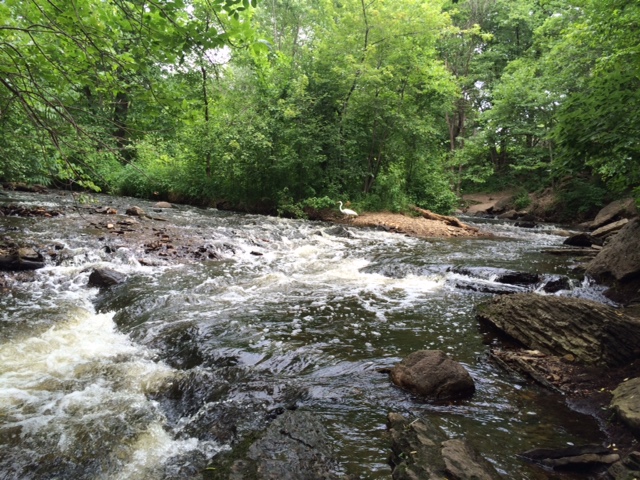In an uncharacteristic spurt of self-absorption several months ago, I made a list describing in some detail what my ideal life would look like. It included stuff like a more leisurely morning routine, some shifts in my role at work, and more time in nature. I’ve been able to check off most of those items on my list — especially since I hit the reset button three weeks ago and started paying attention to what I was doing instead of just doing it (duh!) — but I still seem to be avoiding the Great Outdoors.
Oh, I climb on my bicycle every weekday morning and afternoon and nod at the Mississippi River as I pedal across the bridge on my way to and from the office, and I’ll occasionally ride along Minnehaha Creek if I’m heading west, nodding at Lakes Hiawatha and Nokomis as I pass. But I’ve never been sufficiently moved by the natural splendor that surrounds me to actually get out into it as part of my routine.
This is both ironic and unhealthy:
Ironic because I live three blocks from Minnehaha Falls to the south and three blocks from the Mississippi River to the east. Unhealthy because a regular dose of nature can help keep us healthy as we roll through middle age and beyond.
I was reminded of the unhealthy side of this last week when I stumbled upon a study out of the University of Minnesota arguing that time spent in almost any level of natural environment is good for geezers like me. The research, published in the journal Health and Place, found that green space and water — even if it’s only a flower garden and a small pond — generated a sense of “renewal, restoration, and spiritual connectedness” among the elderly folks they surveyed.
“We zoomed in to everyday life for seniors between the ages of 65 and 86. We discovered how a relatively mundane experience, such as hearing the sound of water or a bee buzzing among flowers, can have a tremendous impact on overall health,” lead author and doctoral candidate Jessica Finlay explained in a statement released by the university. “Accessibility to everyday green and blue spaces encourages seniors to simply get out the door. This in turn motivates them to be active physically, spiritually, and socially, which can offset chronic illness, disability, and isolation.”
So this morning, after breakfast and a few chores, I walked out the back door, down the alley, across 46th Street, and down the hill to Minnehaha Park. In 10 minutes or so, I was far enough downstream from the falls that I could plant myself upon a tangle of roots on the bank of the roaring creek and imagine the city was miles away. As if to validate my vision, an egret magically appeared from around a bend and waded silently in the shallow waters nearby. An omen, perhaps?
I suspect that it’s not too uncommon for folks to take for granted the natural amenities around them. There’s always going to be a certain “been there, done that” feeling attached to these wonders after a few visits, regardless of their magnitude. But, without getting all transcendentalist about it, a few moments immersed in the sights, sounds, and smells of the natural world can sure help a guy inch a little closer to understanding his place in the greater scheme of things.
I’m not sure I ascended to that level of enlightenment down by the creek this morning, but I do think I’ll go back there sooner rather than later. And if that egret should magically appear again, I’ll be tempted to take it as a sign that I’m doing the right thing — even if it’s really all about the fish.

This Post Has 0 Comments